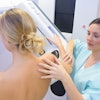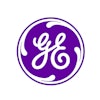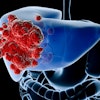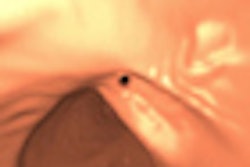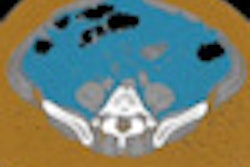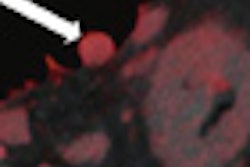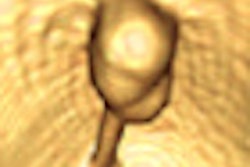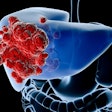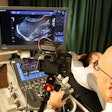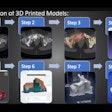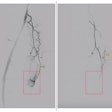
When offered virtual colonoscopy for colorectal cancer screening, substantially more individuals accepted the invitation compared with those who were offered conventional colonoscopy, Dutch researchers found. According to the study published online November 15 in Lancet Oncology, hundreds more screening-age individuals showed up for noncathartic colorectal cancer screening with the virtual technique.
Conventional colonoscopy ended up finding more advanced adenomas per 100 patients. On the other hand, participation in virtual colonoscopy (also known as CT colonography or CTC) was so much higher that more advanced adenomas were found per 100 invitees, said the study team from Rotterdam and Amsterdam.
"The participation rate was higher with CT colonography than with colonoscopy, whereas colonoscopy identified more advanced neoplasia in participants than did CT colonography," wrote Dr. Esther Stoop and colleagues from Academic Medical Center in Amsterdam and Erasmus University Medical Center in Rotterdam. "These two differences more or less canceled each other out in the diagnostic yield per invitee, which was similar in both groups."
Currently, only about half of eligible adults get screened for colorectal cancer, which claims more than 50,000 lives in the U.S. each year. Virtual colonoscopy, which has demonstrated equivalent sensitivity to conventional colonoscopy for detecting clinically significant adenomas, may be a more attractive screening option for patients who want to get tested but are unenthusiastic about the need for sedation and insertion of a colonoscope. Patients with significant findings at VC must proceed to conventional colonoscopy for removal, as VC is diagnostic only.
Several studies have compared the accuracy and yield of CTC and colonoscopy in average-risk populations, Stoop and colleagues wrote. "However, the effectiveness of a population-based screening program does not only depend on the detection rate of the screening technique, but also on the participation rate. One could hypothesize that CT colonography will be perceived as less burdensome, leading to a higher participation in CT-based screening."
COCOS trial
To determine whether CTC really could increase participation and the diagnostic yield of screening, the Colonoscopy or Colonography for Screening (COCOS) trial examined participation rates and results for colonoscopy and noncathartic CTC in average-risk individuals. The researchers did this by inviting adults ages 50 to 75 years in Amsterdam and Rotterdam to participate in colorectal cancer screening.
Participants were randomly allocated to be invited for primary screening by either conventional colonoscopy or CTC (two colonoscopy invitations were sent for every CTC invitation), with each household being invited for the same exam. Participants were also stratified by age and socioeconomic status by postal code using automated minimization randomization, which assigns treatment on the basis of characteristics of the individuals and the treatment of those already randomized.
Brochures approved by the Dutch Health Council were included to provide comprehensive information about both exams. Information about risks and benefits, as well as general colorectal cancer information, were included with the invitations. Symptomatic individuals were asked to decline the screening invitation and contact their family doctor instead, the authors noted.
Patients with adenomas 1 cm and larger at CTC were referred to colonoscopy; those with lesions 6 to 9 mm in diameter were invited to participate in CTC surveillance according to Dutch surveillance guidelines, Stoop and colleagues wrote.
Before being scanned at CTC, patients received a noncathartic bowel prep consisting of an iodinated contrast agent (Telebrix Gastro, Guerbet) the day before the exam, 50 mL 1.5 hours before the exam, and a low-fiber diet the day before the exam. Colonic insufflation with CO2 was performed on an automatic insufflator (ProtoCO2l, Bracco Diagnostics) after intravenous administration of 20 mg of hyoscine butylbromide. Images were acquired on one of two 64-detector-row CT scanners (Brilliance, Philips Healthcare, or Somatom Sensation, Siemens Healthcare) using 0.625-mm collimation, 0.9-mm slice thickness, a 0.7-mm reconstruction interval, 120 kV, and 16-25 reference mAs.
Images were interpreted in primary 2D with 3D problem-solving using enhanced visualization software (ViewForum, Philips), followed by computer-aided detection (CAD) as a second reader using Philips CAD software that is licensed for use in Europe.
Colonoscopy patients were informed of the findings on the day of the procedure, with final results given in two weeks when histological sampling was required. CTC participants were informed about the results within two weeks. When cancer was detected, participants were referred for staging and further treatment.
Colonoscopy was incomplete in 39 (3%) of 1,276 colonoscopy patients; 11 of these were successfully completed during a second round, while 28 declined re-examination, for a net colonoscopy completion rate of 98%, the authors noted. Potentially important findings (C-RADS E3 or E4) were detected in 107 (11%) CT colonography participants, including 10% who had a new diagnosis for which they were further examined.
Extracolonic findings at virtual colonoscopy included four renal-cell carcinomas, one duodenal carcinoma, abdominal aortic aneurysm in seven participants, and smaller vessel aneurysm in three. Adverse events related to the screening procedure consisted of five postpolypectomy bleedings, including two in the colonoscopy group and three in the CTC group who were referred for colonoscopy based on CTC findings.
Additional results are as follows:
A total of 1,276 (22%) of 5,924 individuals invited for colonoscopy participated, compared with 982 (34%) of 2,920 invited for CTC (relative risk [RR] = 1.56; 95% confidence interval [CI]: 1.46-1.68; p < 0.0001).
Among the colonoscopy participants, 111 (9%) had advanced neoplasia, including seven (< 1%) carcinomas. Among the CTC screening group, 84 (9%) were offered colonoscopy, of whom 60 (6%) had advanced neoplasia, including five (< 1%) carcinomas. A total of 82 patients (8%) were offered surveillance.
The diagnostic yield for advanced neoplasia was 8.7 per 100 participants for colonoscopy, compared with 6.1 per 100 at CTC (RR = 1.46; 95% CI: 1.06-2.03; p = 0.02). Broken down by invitation type, 1.9 advanced adenomas were found for every 100 colonoscopy invitations, compared with 2.1 per 100 invitees for CTC (RR = 0.91, 95% CI: 0.66-2.03, p = 0.56).
"We detected advanced neoplasia of 10 mm or more in 1.5 per 100 colonoscopy invitees and in 2.0 per 100 CT colonography invitees, respectively," they wrote. "If the cutoff value for referral would have been 6 mm or more rather than at least 10 mm, we would probably have noted a higher diagnostic yield."
The positive predictive value for advanced neoplasia of CT colonography was 71% (95% CI: 0.62-0.81). If computer-aided detection had not been used at CTC, the yield of participants with advanced neoplasia at CTC would have been 59 rather than 60, the authors wrote.
Not counting the surveillance results that are not yet available, "the diagnostic yield for advanced neoplasia per 100 invitees was similar for both strategies, indicating that both techniques can be used for population-based screening for colorectal cancer," Stoop and colleagues wrote. Notably, the diagnostic yield was similar for the two techniques despite the use of a noncathartic CTC prep.
"It can be debated whether the use of noncathartic preparation in our study has influenced the diagnostic yield in the CT colonography group in a positive or negative way," the authors wrote. "To our knowledge, no studies have compared the diagnostic accuracy of CT colonography with cathartic or noncathartic preparation. However, several studies with iodine tagging similar to that in our study showed results close to those with cathartic preparation." The use of highly experienced readers may have aided CTC sensitivity versus studies with less-experienced readers, but, again, conclusions are difficult to draw.
The 22% participation rate for colonoscopy is more than double the 10% participation reported in Italian randomized trials, and it's slightly less than the 27% rate found in a physician-selected Italian screening cohort. Detection rates for advanced neoplasia are also similar to those found in other studies, the group stated.
Because the invitations were sent to the general population unsolicited, the sample was representative of the population, they wrote. "Since the invitational processes for colonoscopy and CT colonography in our study were identical, the most probable reason for the significant difference in participation rate is a difference in the expected burden or procedure-related complications."
Still, patient preference is not the only matter to account for when determining the best screening method for a given patient, according to the group.
"The decision about the preferred method for colorectal cancer screening in population-based screening can be guided by the results of our trial, which showed more participants with noncathartic CT colonography, a higher yield for colonoscopy, but a similar diagnostic yield for both methods in the detection of advanced neoplasia per 100 invitees," they wrote. "Therefore, to know which screening technique is preferable, other factors such as cost-effectiveness, influenced by higher participation rate of CT colonography and higher yield per participant for colonoscopy, and experienced burden should be studied."
Details about experienced burden in the trial and cost-effectiveness will be reported in a later publication.
Editor's note: The virtual colonoscopy image on our home page was courtesy of Dr. Philippe Lefere, a radiologist at Stedelijk Ziekenhuis in Roeselare, Belgium.
